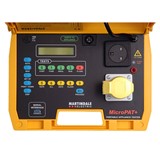They typically show a stage where a group of some of the world’s most powerful political leader’s stand all in a line all wearing the same outfit.
They typically show a stage where a group of some of the world’s most powerful political leader’s stand all in a line all wearing the same outfit. The outfits represent that national dress of the host nation.
Therefore, in some years it is Indonesian batik, in some year’s a Chilean poncho and more recently, a traditional Vietnamese silk gown. Of course, we all know that when politicians appear in ponchos or other forms of exotic dress, that the Asia Pacific Economic Co-operation (APEC) leader’s meeting must be on.
APEC, which comprises the world’s major economies located around the
APEC countries regularly meet to discuss regional co-operation on a whole gamut of cross-border issues from technical issues such as trade facilitation, e-commerce, transport and logistics, to people-focused issues such as human resource development.
And of course, major issues affecting the world often sprint to the top of the APEC agenda. Take the examples of terrorism after September 11 or climate change this year. Much of the APEC agenda requires technical expertise on the varying policy issues.
For example, economic expertise in trade liberalisation may be useful, but climate change or regional geo-political issues require additional scientific or strategic expertise.
As a result, many APEC ‘mini-summits’ of political representatives and officials take place all year on these various subjects but the it is the leaders meeting that draws all these developments together and naturally attracts the media spotlight.
APEC is of particularly interest to
According to Hawke, regional co-operation through the APEC concept was formed response to the global economic tensions resulting from the end of the cold war. “There was some fear, with the Cold War won, that the
There were concerns that this would result in the formation of three major trading blocs based on the dollar, the yen and the deutschmark.” As a result, APEC was developed to help strengthen the world economy and promote economic co-operation and freer trade. Hawke thought that APEC was strategically important for both the region and
“The basis for regional co-operation should be established in the Asia Pacific region, and that APEC should include the world’s largest and most powerful economy, the
APEC’s founding fathers (and mothers) also envisaged that APEC deal with more than just trade issues and that it be an organisation driven by consensus rather than a body that would impose its will on member countries through binding agreements and laws (like the World Trade Organisation and other international institutions).
Secondly, there’s no doubt about APEC’s weight in terms of trade and economic integration. According to the Department of Foreign Affairs and Trade (DFAT), APEC members accounted for 44 per cent of world exports of goods and services in 2005 and 69 per cent of
Australian exporters see APEC playing an important role in their future. At the moment 13 out of our top 20 exporter destinations are in APEC member economies and according to a new survey produced by Austrade in conjunction with DHL, 93 per cent of Australian exporters expect to be selling to APEC countries in 5 years time compared to 60 per cent to non-APEC countries.
Thirdly, APEC has an important role to play in trade facilitation which will especially benefit
According to World Bank research, APEC led reform in trade facilitation could therefore potentially provide gains to APEC members of US$377 billion (A$503 billion). This means that APEC could bring significant economic benefits to business, workers and consumers in the APEC region.
So what of the future? From APEC’s humble origins in
As Prime Minister John Howard recently put it: “the most dynamic region in the world is and will remain the Asia Pacific region. And that is the reason why
And of course, like all APEC leader’s meetings, we also have a ‘fair dinkum’ fashion parade to look forward to in

